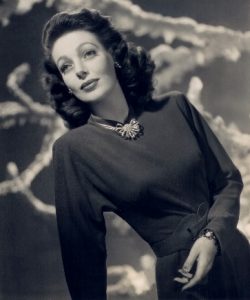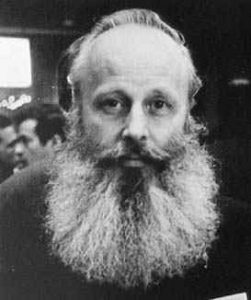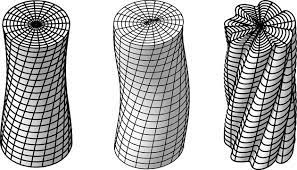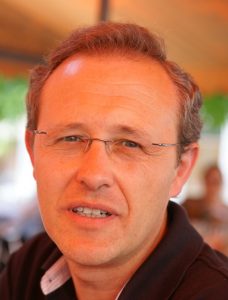The famous Young
Young is a relatively common surname in the world. As of today, there are 616416, 88481 and 54016 people named Young respectively in the United States, England and Canada.

Let us ask ourselves how many Young are or have been known so far. Well, at least, we have the following:
-
Robert Young (1907-1998), American actor, best known for his starring role in the television series Marcus Welby, M.D. He always portrayed happy characters on screen, but had a complicated personal life. He suffered from depression and alcoholism and even staged a 1991 suicide attempt.
-
Loretta Young (1913-2000), American actress, winner of an Oscar for Best Actress in a Leading Role for the 1947 film “The Farmer’s Daughter”.
-
Neil Young (b. 1945), Canadian musician, regarded as one of the most influential of his generation. He is also well known for championing humanitarian and environmental causes. Incidentally, he has recently removed his music from the Spotify platform in protest at its support for US comedian Joe Rogan’s podcast, which gives a voice to anti-vaccine characters.
In addition, we have five British scientists who will be covered below.
What bears the name Young in Science?
In physics, Young’s experiment, which helped to demonstrate wave-particle duality. It was carried out by Thomas Young (1773-1829) around 1800. This Young is also famous for having helped decipher Egyptian hieroglyphs from the Rosetta Stone.
In elasticity, Young’s modulus is a constant that relates stress to deformation of a medium. It is also named after Thomas Young.

In mathematics, a Young tableau is a combinatorial object related to group representations. They are objects of study in the area of algebraic combinatorics and owe their name to the English mathematician Alfred Young (1873-1940).
We also have Young’s inequalities (for products, for convolution products, for integral operators, etc.) and Young’s Theorem for crossed partial derivatives (in this respect, see [2]). All these results refer to William Henry Young (1863-1942).
Finally, we can speak of Young’s measures, introduced by the latter’s son, Laurence Chisholm Young (1905-2000).
The Young-Chisholm family: the father, the mother, the daughter and the son

William Henry Young was an English mathematician. He was the husband of Grace Chisholm Young (1868-1944), with whom he shared the authorship of a number of articles in which only his name appeared. To give us an idea of the situation, here is an extract from a letter to his wife, in which he referred to their joint work:
“… they should be published jointly, but then neither of us would benefit. No. Mine are the laurels and the knowledge. Yours only the knowledge. At the moment you can’t devote yourself professionally. You have your children. I can.”
William Henry was the president of the International Mathematical Union from 1929 to 1936. We have already had the opportunity to talk about him in this blog, in a recent post.
For her part, Grace Chisholm Young, apart from having to make do with working in the shadows, also had time to shine on her own. In 1916, she received the Gamble Prize for Mathematics from Cambridge University for her contributions to calculus. In addition, she studied medicine and music, learned to speak and write six languages correctly, published several books for children, and so on. A true heroine of her time.

Two mathematicians were born to the Young couple. First, there is Rosalind Cecilia Hildegard Tanner (née Young, 1900-1992), who lived in Göttingen. She worked initially with her father and later with E.W. Hobson on questions related to the Stieltjes integral. From 1936 onwards, she devoted herself almost entirely to the history of mathematics.
Then, there is Laurence Chisholm Young (1905-2000), well known for his contributions to Measurement Theory, Calculus of Variations and Control Theory. He settled in 1949 in the United States. Young’s measurements are named in his honour. Also due to him are the concepts of the generalised curve and the generalised surface, which eventually gave rise to varifolds, a generalisation of the idea of differentiable variety in the context of measurement theory.
Stories and anecdotes of Young as a young man
I was lucky enough to meet Laurence Chisholm Young in Toulouse in 1985. He had retired in 1975 and had settled that year in Brazil, between the University of Campinas and the IMPA in Rio de Janeiro, where he taught and tutored PhD students. One year earlier, at the suggestion of Jean-Pierre Aubin, he had been awarded an Honorary Doctorate by the Université Paris-Dauphine (Paris 9).
His figure was imposing, almost as if he had stepped out of a painting. Apart from English, he was able to speak, read and write in several languages and had considerable knowledge of Latin and Greek; he was a good pianist and chess player; he played tennis and was a keen hiker and more.

I remember that he enjoyed telling interesting stories and anecdotes from huddle to huddle, talking about the first-class scientists he had known in his childhood and adolescence: Carathéodory, Hardy, Littlewood, Einstein, and so on. Being close to him on the bus journeys from the hotel to the congress and back was a real delight.
For example, he recounted that around 1930, at his first congress, he was introduced by Lebesgue as follows: “… and now I am going to give the floor to the youngest of all of us here”.
He also told how, when he took up a professorship in Cape Town in 1938, he arrived with so little experience and was such a novice that he was unable to entertain white high society with speeches, something almost unforgivable for a professor coming from the UK at that time.
Because he had an open, friendly and jovial character, he also became the centre of attention and even the butt of jokes from other colleagues. Thus, the well-known optimisation specialist Frank Clarke said in his speech: “It is only fair to mention the magnificent book written by our colleague Laurence fifteen years ago. It came to me when I was a PhD student. A great book. Well, actually, I’m still reading it…” (he was referring to reference [3]).

At the suggestion of his friends and close associates, Young eventually wrote a nice book entitled “Mathematicians and Their Times. History of Mathematics and Mathematics of History”, in which he tried to set out his views on what is and is not valuable in Mathematics, based on his personal experiences; see [4].
I have extracted a few sentences that I find interesting:
- Some people make a rigid mental distinction between pure mathematics and applied mathematics and brand as traitors those mathematicians who “switch” from “pure” to “applied” or vice versa. I have never known anything so sanctimonious. Distinctions are for botanists and lawyers. Mathematicians should investigate what is important, without prejudice or barriers.
- I learned to associate mathematics (past and present) not with definitions and theorems, algorithms and proofs and even less with long formulas, but with the creative minds that developed it. They taught me to value not what they achieved but, above all, what they tried and the way they reasoned, even the mistakes they made.
- The past is a laboratory of human experience, from which we should learn.
In the last years of his life, he devoted himself, among other things, to translating classical poetry from ancient Greek into various languages, including French, German, English and Italian.
For interested and discerning readers
What do Young senior inequalities say?
In its simplest version, Young’s inequality for a product is as follows:
$$
ab \leq \frac{a^p}{p} + \frac{b^{p’}}{p’} \quad \forall a,b \in {\bf R}_+ ,
$$
where \(p \in (1,+\infty)\) and the conjugate exponent \(p’\) verifies \(\frac{1}{p} + \frac{1}{p’} = 1\).

It has numerous generalisations. Among others, the following one: if \(X\) is a vector space whose dual is \(X^*\), \(f : X \mapsto {\bf R}\) is a convex function and \(f^* : X^* \mapsto {\bf R}\) is the corresponding conjugate convex, then
$$
\langle y,x \rangle \leq f^*(y) + f(x) \quad \forall x \in X, \quad \forall y \in X^*,
$$
where \(\langle \cdot\,,\cdot \rangle\) is the duality product associated to \(X^* \times X\).
Young’s inequality for a convolution product can be stated as follows: let \(p, q, r \in [1,+\infty]\) with \(\frac{1}{p} + \frac{1}{q} = \frac{1}{r} + 1\) and suppose \(f \in L^p({\bf R}^n)\) and \(g \in L^q({\bf R}^n)\); then the convolution product \(f*g\) belongs to \(L^r({\bf R}^n)\) and furthermore
$$
\| f*g \|_{L^r} \leq \| f \|_{L^p} \| g \|_{L^q} .
$$
Actually, this inequality is a particular case of the so-called Young’s inequality for integral operators; see for example [5].
What are the Young junior measures?
To understand well its definition, let’s think of a very simple equation: \(F(u) = 0\), with \(F : {\bf R} \mapsto {\bf R}\) a given continuous function. If \(\bar{u} \in {\bf R}\) is a solution, an alternative way of writing the equation is to put
$$
\langle \delta_{\bar{u}},F \rangle = 0.
$$

Here, \(\langle\cdot\,,\cdot\rangle\) is a duality product associated to the space of continuous functions defined on \({\bf R}\) and \(\delta_{\bar{u}}\) is the linear “Dirac delta” form associated to \(\bar{u}\).
Therefore, we can say that a “generalised” solution of the equation is a linear form \(L\) such that \(\langle L,F \rangle = 0\).
This definition extends to much more complicated situations. For example, if \(X\) is a space of functions defined on the open set \(\Omega \subset {\bf R}^n\) and \(M\) is a nonlinear partial derivative operator that sends \(X\) into (for example) \(L^2(\Omega)\), it makes sense to “solve” the equation
$$
M(u)(x) = f(x), \quad x \in \Omega
$$
by proving the existence of a family \(\{ \nu_x \}_{x \in \Omega}\) of linear forms that verify
$$
\langle \nu_x, M \rangle = f(x), \quad x \in \Omega.
$$
It is usually said that \(\{ \nu_x \}_{x \in \Omega}\) is a solution in the sense of measures.
For many equations of interest, it is only possible to prove an existence result by invoking this concept of a solution. It is also often the case that the proof is not trivial. The basic idea consists of first solving a whole family of approximate problems and generating from the obtained approximations \(u^k\) the family \(\{ \nu_x \}_{x \in \Omega}\).
By definition, we are dealing with the Young measure associated to the \(u^k\).
Thus, solving the starting equation in the usual sense reduces to proving a regularity result: that the Young measure one has found is of Dirac type; i.e., that
$$
\exists \bar{u} = \bar{u}(x) \ \hbox{ such that } \ \nu_x = \delta_{\bar{u}(x)} \ \hbox{ in } \ \Omega.
$$
For years, this tool has been used in the domain of the equations of fluid mechanics; see [6].
Young’s measures also appear naturally in connection with problems in the Calculus of Variations and, in particular, in Optimal Control Theory. For example, they allow to formulate (and in many occasions to solve) optimal mixing problems. This occurs because, when the minimum of a function defined in a function space is searched, we find again sequences that generate Young’s measures.
In Spain, Young’s measures have been used, among others, by Pablo Pedregal in connection with problems originating in Nonlinear Elasticity, Turbulence, optimal design, etc.; see [7, 8].
Learn more
- A. Yong, What is a Young Tableau, Notices of the AMS, Volume 54, Number 2.
- Pugh, C.C. “Real mathematical analysis, Second edition.” Undergraduate Texts in Mathematics. Springer, Cham, 2015.
- Young, L.C. “Lectures on the calculus of variations and optimal control theory.” W. B. Saunders Co., Philadelphia-London-Toronto, Ont. 1969.
- Young, L.C. “Mathematicians and Their Times. History of Mathematics and Mathematics of History.” North-Holland P. Co., Amsterdam-New York, 1981.
- Ekeland, I.; Témam, R. “Convex analysis and variational problems.” Classics in Applied Mathematics, 28. Society for Industrial and Applied Mathematics (SIAM), Philadelphia, PA, 1999.
- Málek, J.; Necas, J.; Rokyta, M.; Ruzicka, M. “Weak and measure-valued solutions to evolutionary PDEs.” Applied Mathematics and Mathematical Computation, 13. Chapman & Hall, London, 1996.
- Pedregal, P. “Parametrized measures and variational principles.” Progress in Nonlinear Differential Equations and their Applications, 30. Birkhäuser Verlag, Basel, 1997.
- Pedregal, P. “Variational methods in nonlinear elasticity.” Society for Industrial and Applied Mathematics (SIAM), Philadelphia, PA, 2000.

Leave a Reply